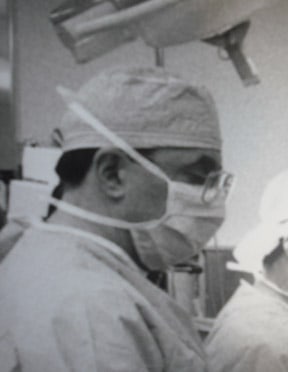A jury awarded a woman $4,618,500 for a needlestick injury she sustained in the parking lot of Target. Skeptical Scalpel shares his opinions.
A South Carolina jury awarded a woman $4,618,500 for a needlestick injury she sustained in the parking lot of a Target store.
She had parked her car and while walking to the store, her daughter picked up a hypodermic needle. As she swatted the needle out of the child’s hand, it punctured the woman’s palm. She went into the store and notified an employee.
HIV post-exposure prophylaxis medications were prescribed which she said rendered her sick and bedridden. Her husband had to take time off from work to care for her.
Hepatitis and HIV testing proved negative. Her lawyer asked Target for $12,000 to compensate her, but the store offered $750.
The plaintiff’s attorney said, “When we started this, we were just trying to get Target to make my client whole, to pay for her medical bills and the time that her husband had to take off work. We tried to be reasonable and not take this to trial. But Target took a really hard stance on it … and I think the jury sent a message.”
Not surprisingly, Target is considering appealing the verdict.
I have some problems with this.
If the verdict stands, does it mean a store is responsible for anything left in its parking lot at any time? Should stores hire people to comb the premises 24/7? That seems overly burdensome.
There is an issue of possible negligence on the part of the plaintiff. Is swatting a needle out of the hand of a child a prudent thing to do? Is it ever OK to swat a needle?
South Carolina is a state that has a modified comparative fault law which means that the plaintiff and defendant can be held responsible for damages proportional to what a jury finds is each one’s percentage of fault. This means the plaintiff could recover damages unless she is deemed responsible for 51% or more of the negligence that occurred. If she was found to have less responsibility than the defendant, her percentage would be deducted from the total amount awarded. Media reports of the case did not mention this issue.
What is the role of post-exposure prophylaxis in this situation?
Physicians and others at the Clinical Consultation Center at the University of California San Francisco have dealt with questions on post-exposure prophylaxis for HIV over 150,000 times. According to the Center’s guidelines, the South Carolina case would be classified as a “found needle” resulting in possible exposure to blood from an unknown source person. The Center’s website says, “No documented cases of HIV transmission from a ‘found needle’ outside of a healthcare setting in the US have occurred.” They generally do not recommend post-exposure HIV prophylaxis in these situations.
The UCSF guidelines do not address the risk of hepatitis in cases of “found needle.” For a needlestick from an unknown source, the CDC recommends only hepatitis B vaccine for those not previously immunized or who are hepatitis B antibody negative. There is no vaccine for Hepatitis C.
Since the plaintiff in this case suffered no permanent physical damage, the award seems disproportionate.
Was this fair? Will the verdict be reduced on appeal? What do you think?
Skeptical Scalpel is a retired surgeon and was a surgical department chairman and residency program director for many years. He is board-certified in general surgery and a surgical sub-specialty and has re-certified in both several times. For the last six years, he has been blogging at SkepticalScalpel.blogspot.com and tweeting as @SkepticScalpel. His blog has had more than 2,500,000 page views, and he has over 15,500 followers on Twitter.



 SkepticalScalpel
SkepticalScalpel